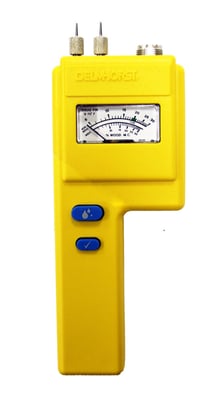 One question that a lot of hobbyists and craftsmen have about moisture meters is whether or not they really need one for their wood. Buying a moisture meter can be expensive, especially if you’re getting one of the top-of-the line models that a professional might use.
One question that a lot of hobbyists and craftsmen have about moisture meters is whether or not they really need one for their wood. Buying a moisture meter can be expensive, especially if you’re getting one of the top-of-the line models that a professional might use.
To answer this question, there’s another one that has to be asked: “what are you doing with that wood?”
For smaller occassional projects, like building a small coffee table for use in the house, a moisture meter isn’t strictly necessary. Here, the material costs and scope of the project usually don’t require such a specialized tool for verifying the wood’s moisture content.
However, if you are making something more substantial, using a moisture meter to track the %MC of wood is key, especially if you've spent a significant amount on materials alone. Here, the risks posed by using moisture-compromised wood are major enough to more than justify the purchase of a device that can measure moisture.
Why Use a Moisture Meter for Hobbyist Work?
As stated earlier, moisture meters aren’t usually needed for smaller projects. However, there are situations where a hobbyist will definitely benefit from carefully monitoring the moisture content of wood.
Hobbyists may want to use a moisture meter if:
- The project uses more than $500 worth of wood.
- They make more than just 1-2 items from wood each month.
- The wood being used is air dried, or an exotic species.
- Finish is being applied to the wood.
If a hobbyist project meets any one of these conditions, then a woodworking moisture meter is well worth the investment.
Moisture meters can help hobbyists spot when a piece of wood is moisture-compromised. This allows hobbyists to avoid using wood that is too wet to safely use so it can be dried or replaced before it’s turned into a permanent part of end product.
Detecting moisture-compromised wood helps hobbyists save time, effort, and money on their woodworking projects.
Picking a Hobbyist Moisture Meter for Woodworking
When using a moisture meter, hobbyists need a device that can provide a quantifiable %MC reading in the wood they’re working with. Moisture meters that have built-in species corrections for different types of wood are great for making sure you can get accurate readings. However, in most cases simply adjusting reading results using a wood species correction table is enough for most hobbyist projects.
While having a meter with all the special bells and whistles would be nice, a hobbyist might get more mileage out of a device that’s easy to use rather than loaded with lots of features designed for reporting reading results.
Simple moisture meter designs such as the J-4 are user-friendly enough for craftsmen, but provide enough accuracy and functionality to meet the needs of professionals.
Although not every hobbyist will need a moisture meter every time they work with wood, having one will certainly help ensure the satisfaction of a job well-done.

Comments